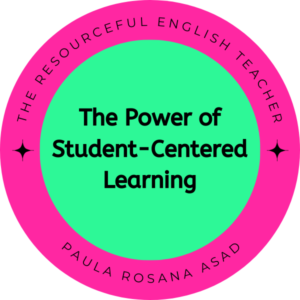Get Ready for Students to Shine! The Power of Student-Centered Learning
Are you struggling to create impactful learning experiences for your students? Do you find it challenging to capture and celebrate their growth? I understand the frustration; I’ve been there too! But don’t worry, I have the solution! Introducing student-centered learning tools is essential for a happy and striving classroom.
In order to create impactful learning experiences, we need an assessment process that captures and celebrates growth. And student-centered assessments can make this happen!!!
In this article, I’ll show you some meaningful tools and ideas that can track learning progress over time and aid in building a culture of learning and reflection.
Here we go!

Portfolios
They are assessment tools that invite conversation, feedback, and reflection on learning. How can students create their own portfolios? Ask them to put their tests, graded worksheets, and samples of their best work in a folder. Then, at the end of each term, tell them to browse this folder and reflect on their learning path.
Portfolios have the advantage of adaptability, as they effectively capture the progression of learning within a single, convenient location. For further information and a deeper understanding of portfolios, you can find additional resources by CLICKING HERE!
Self-Assessment Activities
Empowering students to track and capitalize on their progress engages them in metacognitive processes. By teaching self-monitoring skills, teachers give their students a gift that has far-reaching implications beyond the scope of the classroom.
We can do many activities at the end of the class, have you heard of exit tickets? You can download for FREE a bunch of them HERE!
Furthermore, at the end of each term, we can invite students to complete goal-setting worksheets, answer reflection questions, and revise portfolio assessment guides to help them think about their learning processes.
Hey, if you are running short of time and need these types of activities, you can get my “Thinking Journal” HERE!

Students as the creators of their own tests
The basic idea here is that instead of tests being created by teachers and faculty, students can design their own assessments from time to time. For instance, you can ask them to create a multiple-choice quiz on a certain topic or design a project, or reading guide. This concept could have far-reaching effects that range from helping reduce stress in the classroom to fostering student creativity and collaboration.
What’s more, it’s an effective way to combat the memorization-based approach to learning that many students fall into, therefore, encouraging them to think critically and apply what they’ve learned to create an assessment for their classmates.
Examples:
- Use Kahoot and create a quiz to test the vocabulary learned in the unit.
- Create a multiple-choice test based on the story we read.
- Invent a board game for your classmates to practice xx tense.
- Make a True or False Activity based on the reading.
- Transcribe a song you love and create a list of 5 comprehension questions based on the lyrics for your classmates.
In conclusion, you can nurture impactful learning experiences that help students strive for excellence and success through meaningful assessment tools like portfolios, self-assessment activities, and student-created tests. Let’s remember that student-centered assessment is a valuable and powerful way of fostering a culture of learning and collaboration. As John Dewey said, “Education is not preparation for life; education is life itself.”
I hope this article has empowered you as an educator to rethink and revamp assessment within your classroom or school.
Have a great day, Paula.

